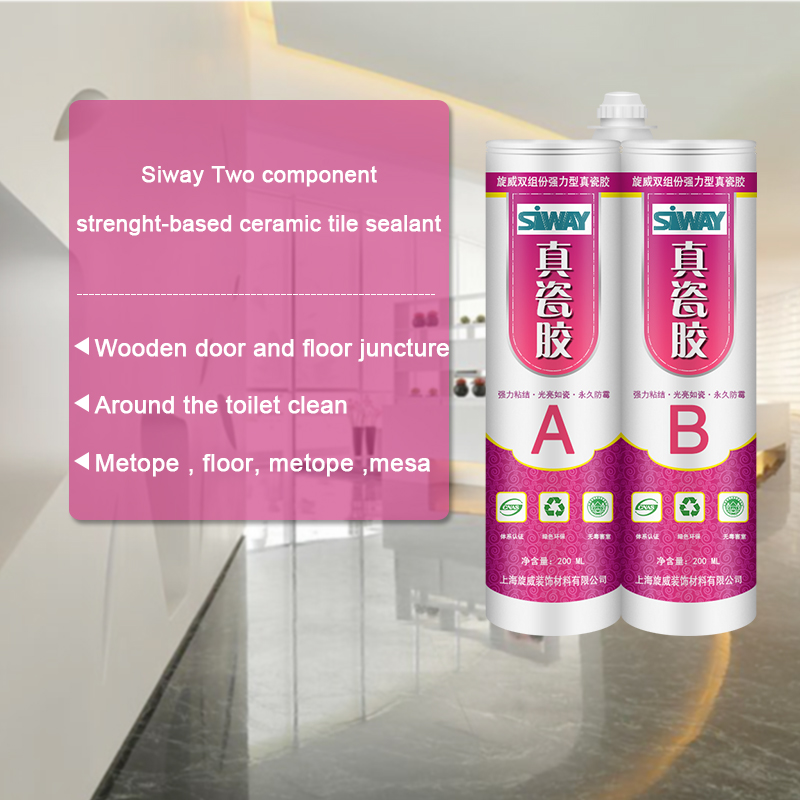High definition wholesale SV-8890 Two-component Silicone Structural Glazing Sealant to Mexico Manufacturer
Short Description:
Description SV8890 is neutral curing, designed for glass, stone, marble, granite, aluminum curtain wall and glass daylighting roof and metal structural engineering structural adhesive seal designed silicone sealant structure, excellent bonding performance of structure and the weathering resistance, after artificial accelerated weathering test, various physical and chemical properties have no obvious change in the sealant. When using, SV8890 with dedicated two-component glue machine constructi...
Our company puts emphasis on the management, the introduction of talented personnel, and the construction of staff building, trying hard to improve the quality and liability consciousness of staff members. Our company successfully attained IS9001 Certification and European CE Certification of High definition wholesale SV-8890 Two-component Silicone Structural Glazing Sealant to Mexico Manufacturer, Our company maintains safe business mixed by truth and honesty to keep long-term relationships with our customers.
Description
SV8890 is neutral curing, designed for glass, stone, marble, granite, aluminum curtain wall and glass daylighting roof and metal structural engineering structural adhesive seal designed silicone sealant structure, excellent bonding performance of structure and the weathering resistance, after artificial accelerated weathering test, various physical and chemical properties have no obvious change in the sealant. When using, SV8890 with dedicated two-component glue machine construction, two kinds of components in accordance with the provisions, mixing ratio after curing form elastomer.
Key Features
1. None sag
2. Adjustable working time
3. Excellent adhesion to most building substrates
4. High bonding strength and modulus
5.12.5%movement capability
6. Silicone durability
Basic Application
1.Glass, stone, marble, granite, aluminum curtain wall and glass daylighting roof and metal structural engineering structural adhesive seal;
2.Insulating Glass of the second seal
3.Many other building and industrial applications
Technical data sheet
| Test project | Unit | value |
| Flow, sagging or vertical flow | mm | 0 |
| Operating time | min | 20 |
| surface drying time(25℃,50%R.H.) | min | 40-60 |
| Durometer Hardness | Shore A | 20-60 |
| At 23 ℃ maximum tensile strength elongation | % | ≥100 |
| Tensile strength(23℃) | Mpa | 0.9 |
| Tensile strength(90℃) | Mpa | 0.68 |
| Tensile strength(-30℃) | Mpa | 0.68 |
| Tensile strength(flooding) | Mpa | 0.68 |
| Tensile strength(flooding – ultraviolet) | Mpa | 0.68 |
| Bond damage area | % | 5 |
| Thermal aging(thermal weight loss) | % | ≤5 |
| Thermal aging(crack) | No | |
| Thermal aging(efflorescence) | No |
Certification
GB 16776
Color
Component A(Base) – White, Component B(Catalyst)- Black
Package
1. Component A(Base): (190L), Component B(Catalyst) (18.5L)
2. Component A(Base):24.5kg (18L), Component B(Catalyst): 1.9kg (1.8L)
Shelf life
12 months
Note
If you want the TDS or MSDS or other details, please contact with our sales person.
“Sealant” is a substance used to block the passage of fluids through the surface or joints or openings in materials, a type of mechanical seal. In building construction “sealant” is sometimes synonymous with “caulking” and also serve the purposes of blocking dust, sound and heat transmission. Sealants may be weak or strong, flexible or rigid, permanent or temporary. Sealants are not adhesives but some have adhesive qualities and are called “adhesive-sealants” or “structural sealants”.
Sealants were first used in prehistory in the broadest sense as mud, grass and reeds to seal dwellings from the weather such as the daub in wattle and daub and thatching. Natural sealants and adhesive-sealants included plant resins such as pine pitch and birch pitch, bitumen, wax, tar, natural gum, clay mortar, lime mortar, lead, blood and egg. In the 17th century glazing putty was first used to seal window glass made with linseed oil and chalk, later other drying oils were also used to make oil-based putties which were often referred to as “caulks”. In the 1920′s polymers such as acrylic polymers, butyl polymers and silicone polymers were first developed and used in sealants. By the 1960′s synthetic-polymer-based sealants were widely available.
Sealants, despite not having great strength, convey a number of properties. They seal top structures to the substrate, and are particularly effective in waterproofing processes by keeping moisture out the components in which they are used. They can provide thermal and acoustical insulation, and may serve as fire barriers. They may have electrical properties, as well. Sealants can also be used for simple smoothing or filling. They are often called upon to perform several of these functions at once.
Wiz Science™ is “the” learning channel for children and all ages.
SUBSCRIBE TODAY
Disclaimer: This video is for your information only. The author or publisher does not guarantee the accuracy of the content presented in this video. USE AT YOUR OWN RISK.
Background Music:
“The Place Inside” by Silent Partner (royalty-free) from YouTube Audio Library.
This video uses material/images from https://en.wikipedia.org/wiki/Sealant, which is released under Creative Commons Attribution-Share-Alike License 3.0 https://creativecommons.org/licenses/by-sa/3.0/ . This video is licensed under Creative Commons Attribution-Share-Alike License 3.0 https://creativecommons.org/licenses/by-sa/3.0/ . To reuse/adapt the content in your own work, you must comply with the license terms.





